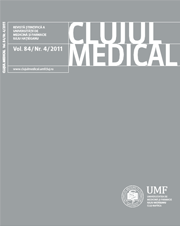The cannabis and the endocannabinoid system. Psychotropic and metabolic effects
Keywords:
cannabis, psychotropic effects, endocannabinoid system, lipid disorders, rimonabant, depression and anxietyAbstract
Evidence has been provided that a sustained use (smoking) of cannabis (indian hemp, marijuana) leads to impaired psychomotor performance, interacting and interfering with the organism’s endocannabinoid system. The effects are dependent on the used dose and the duration of such a habit and about one in ten consumers may develop dependence. More accentuated adverse effects were recorded in subjects with preexistent psychiatric illness and schizofrenics were found to be particularly vulne-rable to cannabis, which triggered relapses and aggravation. The endocannabinoid system includes specific receptors (CB1 and CB2) and the lipidic endocannabinoids anandamide and 2-arachidonoilglycerol (2-AG), acting as activating ligands for the specific receptors. Enzymes ensuring the synthesis, as well as enyzmes involved in the degradation of endocannabinoids were also identified. A hyperactivation of this system leads to an exagerated appetite, hyperphagia, and subsequent obesity as well as to the development of an atherogenic dyslipidemia. The synthetic compound rimonabant, a blocker of the CB1 receptor reduced the exagerated appetite and the body weight, also normalising the plasma lipoprotein pattern. Unfortunately, adverse effects of such a therapy were reported emphasizing an increased incidence of depressive and/or anxious moods. Such observations were suggesting that the endo-cannabinoid system may also be involved in establishing a stable statisfied mood and connexions between this system and serotoninergic mediation were actually documented.
Downloads
Published
How to Cite
Issue
Section
License
The authors are required to transfer the copyright of the published paper to the journal. This is done by agreeing to sign the Copyright Assignment Form. Whenever the case, authors are also required to send permissions to reproduce material (such as illustrations) from the copyright holder.

The papers published in the journal are licensed under a Creative Commons Attribution-NonCommercial-NoDerivatives 4.0 International License.

